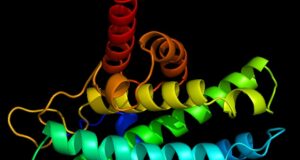Scientists uncover how pregnancy transforms the brain, with gray matter changes that shape maternal instincts and well-being for the long haul.
 Study: Pregnancy entails a U-shaped trajectory in human brain structure linked to hormones and maternal attachment. Image Credit: Maridav / Shutterstock
Study: Pregnancy entails a U-shaped trajectory in human brain structure linked to hormones and maternal attachment. Image Credit: Maridav / Shutterstock
In a recent study published in the journal Nature Communications, researchers conducted a longitudinal study to investigate the neurological changes accompanying human pregnancy, particularly for first-time mothers.
Their study spanned pre-pregnancy, during pregnancy, and postpartum and discovered that gray matter (GM) volume evolves in a U-shaped pattern—it first declines during late pregnancy and then recovers in the six months postpartum. The study found that GM volume declined by 2.7% during the second trimester and 4.9% immediately before delivery, followed by a 3.4% recovery postpartum. Hormonal evaluations suggest that these changes are caused by pregnancy-associated estrogen fluctuations, with estriol sulfate and estrone sulfate identified as key factors rather than parenting experience.
Notably, maternal mental health was found to influence the relationship between postpartum GM recovery (volume) and maternal attachment. Specifically, maternal well-being mediated over 50% of the relationship between GM volume recovery and maternal attachment, highlighting its critical role. These findings provide the first evidence for the previously hypothesized U-shaped GM pattern, filling a significant neuroscience knowledge gap and forming the basis for future neuroimaging investigations to improve maternal mental health and well-being.
Background
Pregnancy is arguably the most transformative period in a female’s life, particularly in animals exhibiting parental care. Globally, more than 140 million females give birth yearly, with previous neuroimaging research identifying significant brain architecture remodeling accompanying the process. These studies suggest that brain remodeling helps equip pregnant women for motherhood by enhancing their maternal attachment.
Concurrent studies in murine (rodent) model systems have identified steroid hormone alterations that may facilitate maternal behaviors. A recent observation-driven hypothesis posits that human brains may undergo cortical gray matter (GM) volume evolution during pregnancy and that this volume change may follow a U-shaped pattern of initial loss (during pregnancy) and subsequent gain (postpartum). Unfortunately, this hypothesis or the factors influencing its manifestation (such as hormones, maternal experience, and mental health) have never been tested.
About the study
The present prospective study aims to address these knowledge gaps using cutting-edge Magnetic Resonance Imaging (MRI), neuropsychological assessments, and hormone analyses across the temporal pregnancy spectrum (before, during, and following pregnancy and birth). To ensure that the patterns observed were restricted to the maternal process, data from prospective mothers (termed ‘gestational mothers’; n = 127) were compared to nulliparous women (those with no pregnancy plans throughout the study; n = 32).
Furthermore, to unravel the role of physiological changes versus the parenting experience, data from gestational mothers were compared with those from ‘non-gestational mothers (n = 20),’ partners of gestational mothers who shared the parenting experience (baby upkeep) without being pregnant.
“This landmark design allowed us to uncover the brain trajectory that unfolds during the transition to motherhood, as well as its connection with steroid hormones and maternal attachment, filling a critical void in the human maternal brain literature.”
The study was carried out over five sessions – before conception, second trimester, third trimester, one month postpartum, and six months postpartum. Each session comprised a comprehensive MRI evaluation, urine sample collection (for hormone/endocrine assessments), and mental health questionnaires. The MRIs were optimized to scan and image global cortical GM volume, surface area, and thickness, providing a comprehensive assessment of brain changes.
MRI data in tandem with urine-derived steroid metabolite quantification was used to unravel the associations between brain structural evolution and gestational hormones. Among 49 hormones analyzed, only estriol sulfate and estrone sulfate showed significant negative correlations with GM volume changes, suggesting their role in triggering or modulating outcomes of interest. Finally, questionnaire data and mental health records were used to assess the parental experience and psychological well-being contributions to observed neurological evolution.
Study findings
This study is the first to confirm the increasingly popular hypothesis that GM volume evolves in a U-shaped pattern over the duration of pregnancy. GM volume declines during the second trimester (by 2.7%) and immediately before gestation (by 4.9%). These changes were symmetric across both brain hemispheres, with the most significant declines in the Default Mode and Frontoparietal brain regions.
GM volume recovered by 3.4% at six months postpartum but did not fully return to pre-pregnancy levels, suggesting possible long-term adaptations. While more extended follow-up periods are required to confirm this hypothesis, current study data suggest that GM volume changes during a woman’s first pregnancy may have lifelong effects, permanently equipping her for motherhood via enhanced maternal attachment. GM volumes remained unaltered in nulliparous and non-gestational cohorts.
Linked evolution analyses between neuroanatomical observations (MRI scans) and hormone quantification (analyzing 49 hormones) revealed that only two hormones, estriol sulfate, and estrone sulfate, were negatively correlated with GM volume in a temporally mirrored fashion, suggesting the role of sulfated estrogens in triggering or modulating outcomes of interest.
Finally, evaluations of the interplay between brain structural changes, maternal mental health (maternal well-being, postnatal depression, and perceived stress), and baby attachment revealed interesting results –
- Greater GM recovery postpartum was positively associated with reduced hostility toward the baby,
- Maternal well-being directly increased the extent of GM recovery postpartum (and, in turn, affected the first result), and
- Postnatal depression and perceived stress were not significantly associated with changes in maternal affection or GM volume.
Conclusion
The present study is the first to validate that women undergo substantial GM volume changes throughout their pregnancy, observed as a U-shaped pattern of initial pre-delivery loss and subsequent postpartum gain. Estrogens, specifically estriol sulfate and estrone sulfate, are likely the driver of these changes, with the parenting experience playing little to no role in brain structural modifications. Additionally, functional connectivity analyses revealed no significant changes in network modularity, segregation, or participation coefficient across the pregnancy period.
Maternal well-being was found to be the strongest determinant of postpartum GM recovery and, in turn, maternal attachment, mediating over half of the observed effect.
“By revealing the dynamic brain changes during pregnancy, the possible hormonal drivers behind these changes, and how their interplay impacts the mother’s psychological well-being, this study marks a crucial advance in maternal brain research.”
Journal reference:
- Servin-Barthet, C., Martínez-García, M., Paternina-Die, M. et al. Pregnancy entails a U-shaped trajectory in the human brain structure linked to hormones and maternal attachment. Nat Commun 16, 730 (2025), DOI – 10.1038/s41467-025-55830-0, https://www.nature.com/articles/s41467-025-55830-0




